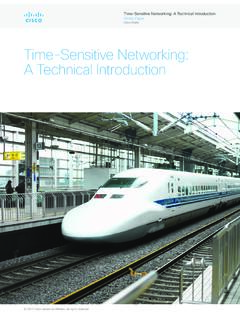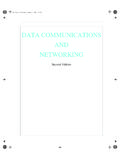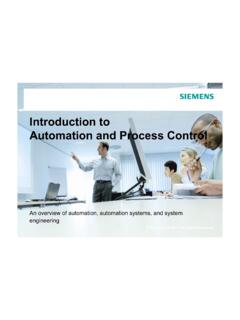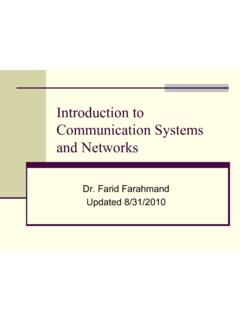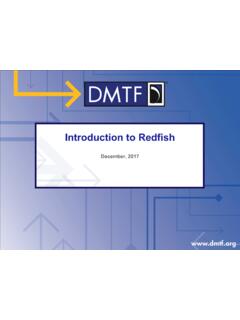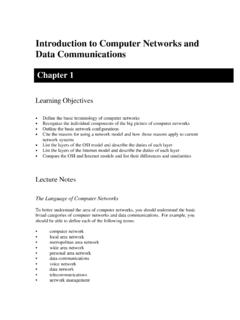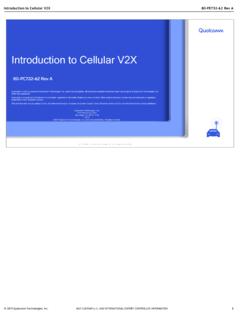Transcription of ASHRAE TC9.9 Data Center Networking Equipment – Issues …
1 ASHRAE data Center Networking Equipment Issues and Best Practices Whitepaper prepared by ASHRAE Technical Committee (TC) Mission Critical Facilities, data Centers, Technology Spaces, and Electronic Equipment Table of Contents EXECUTIVE SUMMARY ..2 1 Market Segments for Networking Equipment ..3 Basic Networking Hardware Functionality ..4 Abstraction Layers Used in Networking ..5 Common Types of Networking Equipment ..6 Typical data Center Network Topology: An Overview ..7 2 SURVEY OF MAXIMUM TEMPERATURE RATINGS ..10 3 COOLING DESIGN OF Networking Equipment .
2 11 Common Air Flow & Mechanical Design Configurations ..11 Origin of Networking Equipment Thermal Designs ..15 Ideal Designs & Installations ..17 Non-Ideal Designs and Installations ..18 4 Equipment POWER AND EXHAUST TEMPERATURES ..21 5 ENVIRONMENTAL SPECIFICATIONS ..23 6 RELIABILITY ..26 7 PRACTICAL INSTALLATION CONSIDERATIONS ..29 8 ASHRAE RECOMMENDATIONS ..31 9 SUMMARY ..33 10 REFERENCES ..34 APPENDIX A: DEFINITION OF ACRONYMS AND KEY TERMS ..35 APPENDIX B: ACOUSTICS ..39 APPENDIX C: TOUCH TEMPERATURE.
3 42 Executive Summary New thermal design and installation practices are needed to prevent the possibility of over-heating and loss of functionality of Networking Equipment in a data Center environment. Commonly accepted design and installation methods, such as placing a top of rack switch behind a blanking panel, can cause Networking Equipment to over-heat, lose functionality, and even compromise data integrity. New energy saving trends, such as higher data Center air temperatures and economization, are further taxing the thermal margins of Networking Equipment .
4 A combination of design and installation recommendations are proposed that will allow for seamless and reliable integration of Networking Equipment in a data Center environment with little or no need for thermal engineering on the part of the user and no concerns of over-heating or compromise of functionality. ASHRAE recommends new Networking Equipment designs draw cooling air from the front face of the rack with the air flow direction from the front of the rack to the rear and the hot exhaust exiting the chassis at the rear face of the rack. This front to rear cooled Equipment should be rated to a minimum of ASHRAE Class A3 (40 C) and preferably ASHRAE Class A4 (45 C).
5 The development of new products which do not adhere to a front to rear cooling design is not recommended. It is recommended that Networking Equipment , where the chassis doesn t span the full depth of the rack, have an air flow duct that extends all of the way to the front face of the rack. ASHRAE recommends the Equipment be designed to withstand a higher inlet air temperature than the data Center cooling supply air if: a) the Equipment is installed in an enclosed space that doesn t have direct access to the data Center air cooling stream, or b) the Equipment has a side to side air flow configuration inside an enclosed cabinet.
6 Networking Equipment manufacturers should provide very specific information on what types of installations their Equipment is designed for. And users should follow the manufacturer installation recommendations carefully. Any accessories needed for installation, such as ducting, should either be provided with the Equipment or should be readily available. By following these recommendations the risk of Equipment over-heating can largely be avoided and the compatibility of Networking Equipment with other types of Equipment in rack and data Center level solutions will be significantly improved.
7 1 Introduction This paper is written for a broad audience that includes data Center power and cooling experts as well as IT and Networking specialists. Sections of the paper may be basic for some audience members. The reason for this is to provide a wide base of background information that bridges any gaps in understanding and provides a common framework for understanding the proposed Networking thermal Issues and best practices. Significant changes are taking place in data centers that will affect how Networking Equipment is designed and deployed both now and in the future.
8 For example, many data Center applications require Networking Equipment to be deployed as part of a rack level solution. Rack level solutions can create an interaction between the Networking Equipment and the thermal behavior of other types of IT Equipment in the rack. The exhaust temperature of current generation servers has risen significantly as fan speeds are being reduced to save energy. In many common data Center rack level installations, the Networking Equipment takes its cooling air flow from the rear of the rack where the air temperature is largely determined by the exhaust temperature of the other IT Equipment .
9 data Center operating temperatures and cooling technologies are also changing. For more information on new and emerging data Center cooling technologies such as air-side economization, water-side economization, liquid cooling and the efficient use of air conditioning, please consult the books in the ASHRAE Datacom series [1-4]. Traditional operating ranges of 15-20 C are giving way to warmer temperatures, some as high as a recommended temperature as high of 27 C. The adoption of economization (both air and water-side) is growing. In a heavily economized data Center , the air inlet temperature of the IT Equipment will be determined by the temperature of the outdoor air and can vary widely depending on the time of day and season of the year.
10 Even in a conventional HVAC controlled data Center that is operated within the ASHRAE recommended range of 18 27 C, it is possible to have an installation where the Networking Equipment exceeds its data sheet temperature rating under normal operating conditions. Exceeding the maximum rated temperature is not allowed and it may impact data integrity or even cause a loss of functionality. Recently, a major data Center operator [5] made a public statement that they believe the thermal capability of the Networking Equipment was a weak link in their fresh air cooled data centers.


